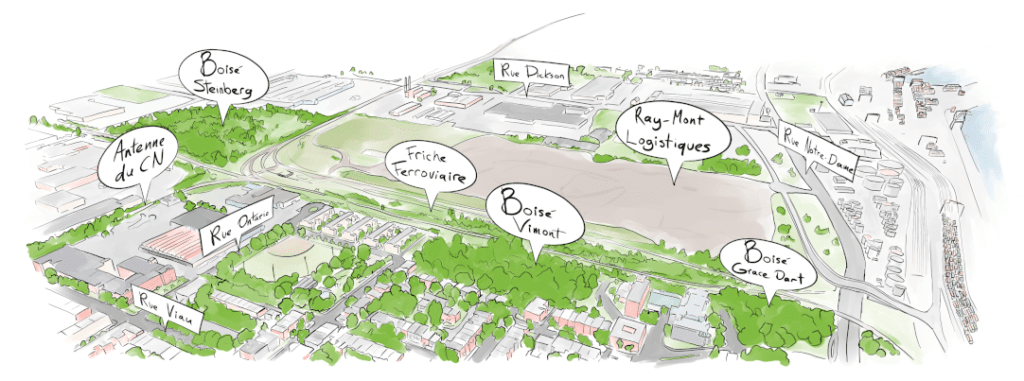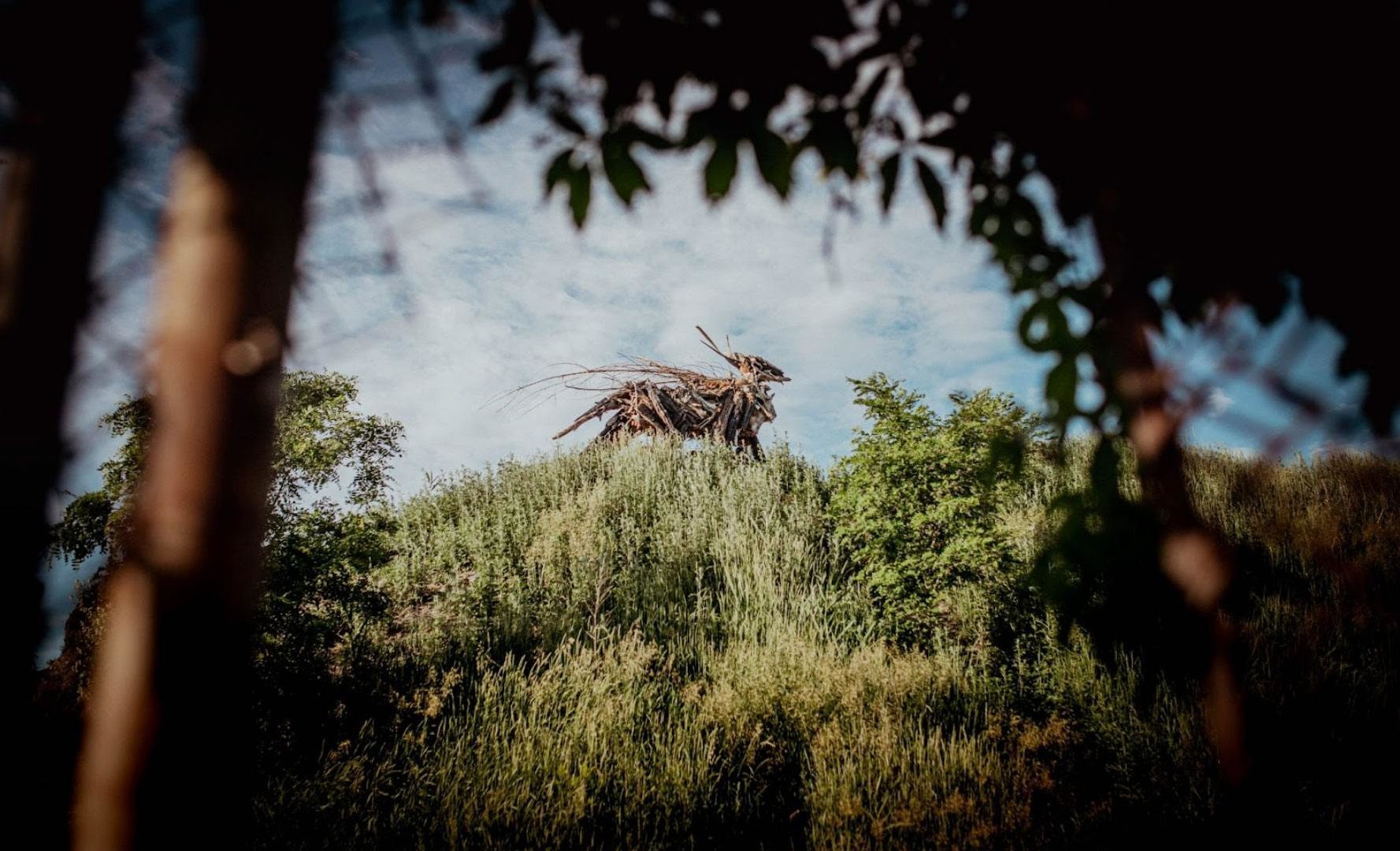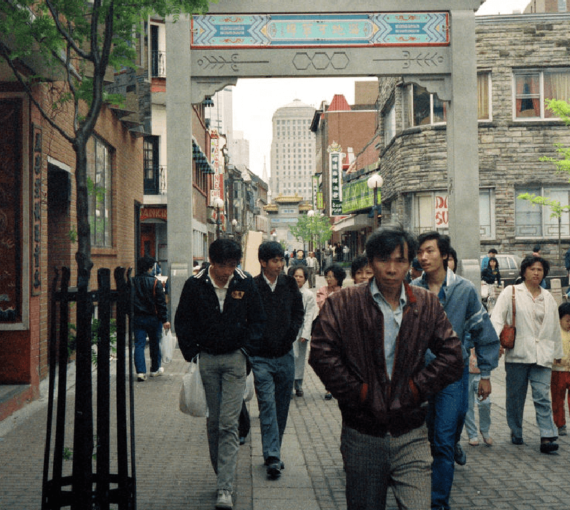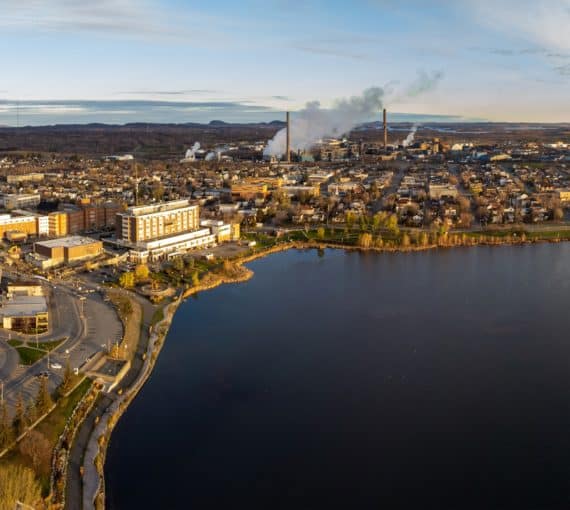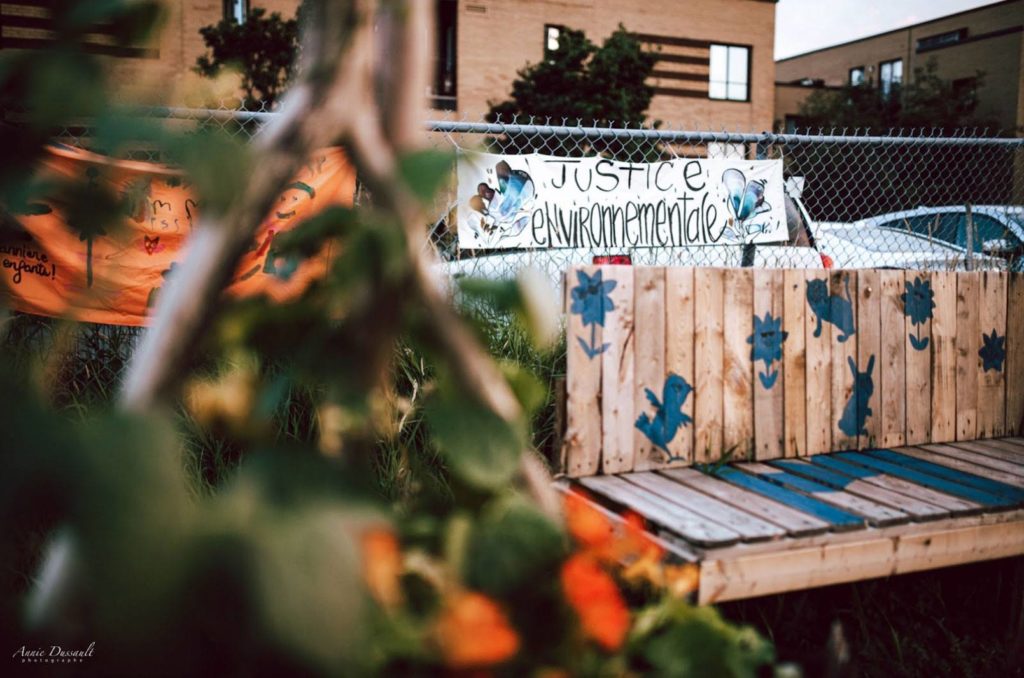
The community gardens developed in the railway wasteland. (Photo: Annie Dussault via Résister et fleurir)
Mobilization 6600 Natural Park MHM — blooming resistance
Note: This English translation, including quotations, is from a French original.
The population of Hochelaga-Maisonneuve, in the eastern part of the Island of Montreal, is increasingly immigrants and young families. Residents founded Mobilization 6600 to preserve and protect the “vacant” lot at the centre of their neighbourhood — wooded areas, ponds and wetlands home to diverse fauna and flora — at all costs. The green space, once a friendly picnic spot and ideal destination for family outings less than ten years ago, is threatened by construction projects for transportation of agricultural goods by freight, road and water.
In 2016, Ray-Mont Logistics purchased a 2.3 million-square-kilometre plot of land east of Vimont woods to build a transshipment station for exporting grains and cereals and storing up to 10,000 containers that — despite being located near a long-term care home and a row of housing cooperatives — would operate 24 hours and see the transshipment of 1,000 trucks and 100 train cars every day. Plans included extending Assomption-Sud and Souligny boulevards to cut through the wooded space to the east, restoring abandoned CN railways to the south and construction of a viaduct for the Port of Montreal to the south. Neighbourhood residents would face increasing atmospheric pollution and dust concentration in the air, as well as the disappearance of one of the last renaturalized spaces in the area.
In 2021, an Observatory of Urban Environments study concluded that the south of the Mercier-Hochelaga-Maisonneuve borough is one of the world’s worst examples of industrial and residential coexistence. Members of Mobilization 6600 note that it’s no coincidence that a neighbourhood with a lower average income than in the City of Montreal is targeted for so many destructive projects. “Let’s just say that this wouldn’t happen in Westmount,” one activist said, emphasizing that capitalism in the global north exploits marginalized populations and uses oppressive monetary politics to coerce countries in the global south into accepting the north’s commercial exports.Despite being located near a long-term care home and a row of housing cooperatives, it would operate 24 hours a day and see 1,000 trucks and 100 train cars pass by daily.
Aware of the risks of biodiversity collapse and decline in their quality of life, Hochelaga-Maisonneuve residents began to mobilize in winter 2017-2018. First they demanded a public consultation for citizens to formally express their opposition to the proposed projects. To hold a public hearing, the Public Consultation Office required a paper petition with 5,000 signatures (today, electronic signatures are accepted). Organizers went door-to-door in the bitter cold and collected 6,600 signatures — creating Mobilization 6600 — the first community engagement group in the city’s history to secure a public consultation.
Plan Parc Nature MHM

Illustration: Alexandre Boiteau via Résister et fleurir
The group continues their fight. Their main demands include a provincial Bureau of Environmental Public Hearings consultation, the reappropriation of the land of Ray-Mont Logistics for decontamination, and the protection of the vacant lot and of the woods, threatened by an electric transformation post belonging to Hydro-Québec and the construction of new roads. They also want all these locations be protected as a natural park.
Group members — empowered by myriad, diverse cultural and professional experiences — are organizing activities to unite the neighbourhood against climate injustices. They hold regular festive protests, such as action weeks, human chains, sugar shacks and other activities, on the land they seek to reappropriate. They developed a community garden in one corner where area residents exchange tips about plant maintenance and identifying edible species. Urban planning conferences, art workshops, and education sessions raise awareness about the importance of community organizing.
Mobilization 6600’s activists organized garbage pick-up sessions with those neighbours. Many of the people without housing confided that proximity to nature was soothing as it offered temporary shelter against the daily violence of the streets.
Mobilization 6600’s climate justice vision aims to ensure humans and nature live harmoniously and to eliminate systemic barriers that subject the most vulnerable groups to the most catastrophic effects of the climate crisis. The group is especially sympathetic to oppression faced by homeless people, who assembled in Steinberg woods in December 2020 after Montreal police dismantled their encampment on Notre-Dame. Mobilization 6600’s activists organized garbage pick-up sessions with those neighbours. Many of the people without housing confided that proximity to nature was soothing as it offered temporary shelter against the daily violence of the streets.
Preservation of nature, citizen initiatives, environmental revitalization, social justice… Actions coordinated by Mobilization 6600 are accessible to all and bring an entertaining, expressive component of civil disobedience to the table. An artist erected a statue made of recycled materials and pieces of wood found on the land. Named “the Spirit of the Forest,” it stands tall and proud on the hill that separates the Vimont woods and the Ray-Mont Logistics property, emblematic of the group’s determination to oppose the projected developments and ensure the longevity of one of Hochelaga-Maisonneuve’s last green spaces.
